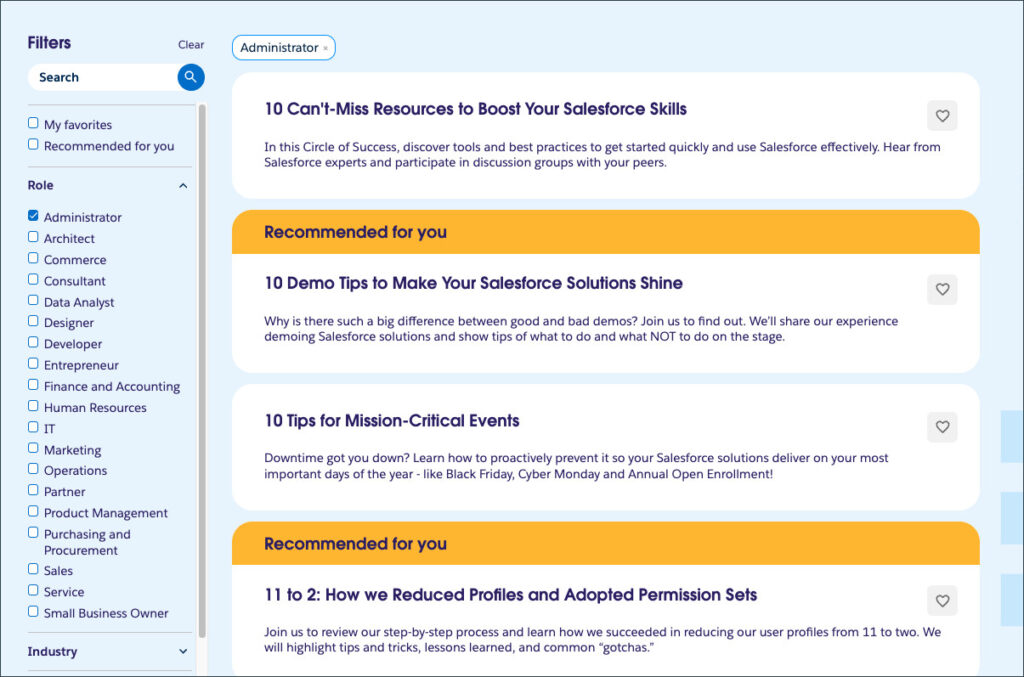From startups to industry giants, every small or medium-sized business (SMB) goes through key growth stages. Each phase brings challenges to overcome and opportunities to seize. But here’s the truth most business guides don’t tell you — the tools and approaches that helped you succeed yesterday often become tomorrow’s obstacles.
Understanding exactly where your business stands right now helps you make smarter decisions about everything — your team structure, workflow systems, customer relationship management (CRM) tools, and financial processes. Finding solutions that fit your stage can make all the difference to your business growth. Let’s explore each growth phase and discover how to set yourself up for success, no matter where you are on your journey.
What we’ll cover:
- Stage 1: Startup – Turning ideas into reality
- Stage 2: Growth – Gaining traction and scaling
- Stage 3: Maturity – Optimizing and stabilizing
- Stage 4: Expansion – Breaking new ground
- Stage 5: Transformation – Evolve or decline
- How CRM and AI can help at each stage
- Master the 5 growth stages with the right CRM solution
Stage 1: The startup stage
Turning ideas into reality
In the startup phase, you’re turning your vision into a reality with just 1-10 team members. You’re developing your product, hunting for those first crucial customers, and seeking funding. According to the Sixth Edition Small and Medium Business Trends Report, 83% of new businesses face challenges with customer acquisition, making every potential lead critically important.
What you do in the startup stage:
- Idea development: Refining the initial concept.
- Market research: Validating the idea and understanding the target market.
- Business plan creation: Outlining goals, strategies, and financial projections.
- Funding: Securing initial capital through personal savings, loans, or investments.
- Team building: Assembling a core team of founders and early employees.
- Product development: Creating and testing the initial product or service.
- Branding and marketing: Establishing a brand identity and initiating marketing efforts. Marketing becomes more strategic. You can create targeted email campaigns that automatically track messages that generate interest.
- Customer acquisition: Focusing on acquiring the first customers and gathering feedback.
- Operational and legal setup: Setting up legal information, basic operations, including office space and technology.
What you’ll need to overcome at this stage:
- Limited resources and budget constraints
- Building an initial customer base from scratch
- Establishing credibility in the market
- Creating efficient processes with minimal staff
- Opportunity to set strong foundations for future growth
What tools you’ll need:
An easy to use CRM becomes your business backbone during this vulnerable stage. It centralizes all customer information in one accessible place. For example, when an interested prospect from some networking event reaches out, their details are instantly available. No scrambling through inbox searches or forgotten conversations.
Start with SMB Basics
Stage 2: The growth stage
Gaining traction and scaling
In the growth stage, your business is gaining momentum with typically 10-50 employees. Your concept is proven, sales are increasing, and you’re building specialized teams to handle different aspects of the business. Our research found that 66% of business owners get stuck handling paperwork instead of planning their next big move — a clear sign you need better systems.
What you do in the growth stage:
- Product or service improvement: Enhancing the product or service based on customer feedback.
- Market expansion: Entering new markets or segments.
- Increased marketing: Scaling marketing efforts to reach a broader audience.
- Hiring: Expanding the team to support growth.
- Revenue growth: Increasing sales and revenue.
- Customer retention: Focusing on customer satisfaction and loyalty.
- Technology upgrades: Investing in better technology and infrastructure.
- Partnerships: Forming strategic partnerships to increase reach and capabilities.
- Financial management: Improving financial planning and management.
What you’ll need to overcome at this stage:
- Managing increasing customer volume without sacrificing quality
- Building and training a growing team efficiently
- Creating repeatable processes that don’t depend on founders
- Maintaining company culture during rapid hiring
- Establishing market position against growing competition
What tools you’ll need:
A smart CRM provides all the essential tools in one connected platform you’ll need at this stage. You’ll have sales templates that create consistency and help new team members contribute quickly. As well as a simple online store builder that lets you sell directly to customers without needing technical skills. And, it also has powerful automation features to eliminate repetitive tasks for your teams — automatically assigning follow-ups, sending reminder emails, and highlighting your most promising opportunities.
Stage 3: The maturity stage
Optimizing and stabilizing
At this stage, your business has established a solid market presence with a hundred or more employees. You’re generating consistent revenue, though the growth rate may have naturally slowed. According to The Ninth Edition State of Marketing Report, businesses in this phase spend 45% of their time focusing on optimization rather than rapid expansion. Your priorities shift toward maintaining market share, figuring out operations, and investing in research and development to stay competitive while exploring new opportunities.
What you do in the maturity stage:
- Process optimization: Streamlining operations to improve efficiency.
- Quality control: Ensuring consistent quality in products or services.
- Customer service: Enhancing customer support and service.
- Brand loyalty: Building strong brand loyalty and reputation.
- Diversification: Exploring new product lines or services.
- Market leadership: Establishing a strong position in the market.
- Financial stability: Achieving consistent profitability and cash flow.
- Employee development: Investing in employee training and development.
- Compliance: Ensuring compliance with industry regulations and standards.
What you’ll need to overcome in this stage:
- Maintaining market share against increasing competition
- Optimizing operational efficiency and profit margins
- Creating more sophisticated departmental structures
- Balancing innovation with process standardization
- Avoiding complacency and maintaining growth momentum
What tools you’ll need:
A CRM like Pro Suite gives growing businesses opportunities to scale while staying connected to customers. Your support team can handle multiple real-time chats with full customer history at their fingertips. You can also create custom reports and set up automated workflows that reduce routine tasks as your team grows. And, for sales, you can generate professional quotes quickly and forecast revenue with confidence for this stage.
Ready to go Pro?
Level up your CRM with the top-rated Pro Suite — the customer platform that scales with you.

Stage 4: The expansion stage
Breaking new ground
At this stage, your business is ready to scale beyond its current market. This could mean expanding into new locations, offering new products or services, or even acquiring other businesses. The goal is new growth and revenue opportunities. With a growing team of 200-500 employees, operations have become more complex, and smart technology plays a key role in managing this growth. According to the latest research, 72% of expanding SMBs say technology investments were critical to successful market expansion.
What you do in the expansion stage:
- Geographic expansion: Entering new geographic markets.
- New product lines: Launching new products or services.
- International markets: Exploring international opportunities.
- Acquisitions: Acquiring other businesses to expand capabilities.
- Strategic alliances: Forming partnerships for mutual growth.
- Technology investment: Investing in advanced technology to stay competitive.
- Brand expansion: Strengthen brand presence and recognition.
- Market penetration: Increasing market share in existing markets.
- Organizational structure: Reorganizing to support larger operations.
What you’ll need to overcome at this stage:
- Managing operations across different markets or divisions
- Adapting to diverse customer needs and expectations
- Maintaining consistent brand experience during expansion
- Integrating acquired companies or new product lines
- Managing increased organizational complexity
What tools you’ll need:
A scalable platform like Pro Suite lets you add specialized apps that match your industry needs without hiring developers. These advanced CRM features help you create targeted marketing campaigns based on how customers behave and where they’re located, which improves your results. You also get customer service tools with self-service options in multiple languages, giving customers quick answers and freeing your team for harder issues. All these features work together to keep your business stable while preparing for future growth.
Stage 5: The transformation stage
Evolve or decline
At this stage, your business has reached a turning point. With 500+ employees, you now face an important choice about your future. You can continue to grow by creating new products and reaching more customers, making your business stronger in the market. Or you might begin to slow down because markets change, competitors gain ground, or internal problems develop.
The best-fit technology makes all the difference during this critical growth phase. Your technology choices now directly impact whether you’ll keep growing or start struggling. Having the scalable tools for a large business is important now to maintain what you’ve built and take the final step toward becoming a true industry leader.
What you do in the transformation stage:
- Innovation: Introducing new and innovative products or services.
- Digital transformation: Embracing digital technologies to improve operations.
- Cultural shift: Changing the company’s culture to adapt to new challenges.
- Diversification: Exploring new business models or markets.
- Strategic reorientation: Reassessing and adjusting the business strategy.
- Cost reduction: Implementing cost-saving measures to improve profitability.
- Talent retention: Focusing on retaining key talent and leadership.
- Sustainability: Emphasizing sustainable practices and corporate social responsibility.
- Exit strategy: Considering options for the future, such as mergers, acquisitions, or selling the business.
What you’ll need to overcome at this stage:
- Reinventing business models to stay relevant in changing markets
- Managing complex organizational structures efficiently
- Balancing innovation with the needs of existing customers
- Competing with both established players and agile startups
- Overcoming internal resistance to transformational change
What tools you’ll need:
Advanced solutions like Salesforce Foundations and Agentforce give mature businesses what they need to excel. These platforms handle complex customer relationships across different markets while providing AI insights that spot trends and opportunities ahead of competitors. Your customer service teams can deliver personalized experiences even at scale, with AI helping agents and handling routine questions automatically. These powerful capabilities create an integrated approach that positions your business for continued success in changing markets.

How AI CRM can help at each stage
As your business evolves through different phases, your needs for managing customer relationships and data change dramatically. The ideal technology solutions at each stage can make the difference between struggling with growth and confidently scaling your operations. Here’s how specific solutions adapt to your changing needs as you grow:
Starter Suite CRM: Perfect for new and growing businesses
Starter Suite provides exactly what startup and early-growth businesses need without overwhelming complexity. You get contact management that organizes your customer information in one place, simple marketing tools that work without a specialized team; and professional customer service features that help build strong relationships from day one. With ready-to-use templates and straightforward processes, you can get up and running quickly while establishing foundations that will support your future growth.
Just get started.
No matter where you are on your journey as a small business owner, you can get started with Starter Suite — the all-in-one AI CRM your SMB needs.

Pro Suite CRM: Advancing your scaling business
As your business reaches maturity with 50-200 employees, Pro Suite delivers the advanced capabilities you need. This solution helps you automate complex processes that previously required manual work, provides deeper analytics for smarter decisions, and supports sophisticated marketing across multiple channels. Your sales teams benefit from smarter tools for quotes, contracts, and forecasting, while strong integration capabilities connect with your other business systems. Pro Suite’s scalable design supports your expansion into new regions and markets.
Agentforce and Foundations: Future-proofing your business
When your business reaches 500+ employees and faces critical transformation decisions, Agentforce and Salesforce Foundations provide enterprise-level solutions. These platforms deliver AI-powered insights that identify important patterns and predict customer needs before they emerge. You gain the security, compliance, and customization capabilities required for complex organizational structures, along with global features supporting multiple languages and currencies. (Back to top.)
Master these business growth stages with the right tools
Every business journey progresses through these distinct stages, and we hope this article has helped you navigate each one — no matter where you’re on your journey. The good news is that at each stage, Salesforce CRM evolves just as fast as your business. The right CRM system isn’t just about managing customer relationships — it’s about creating a scalable foundation that supports your business through every phase of growth. Don’t miss the opportunity to grow strategically. Make sure your CRM grows with you.
Just getting started? Try Starter Suite. Need more customization? Explore Pro Suite. Already with Salesforce? Activate Foundations and experience Agentforce today.











